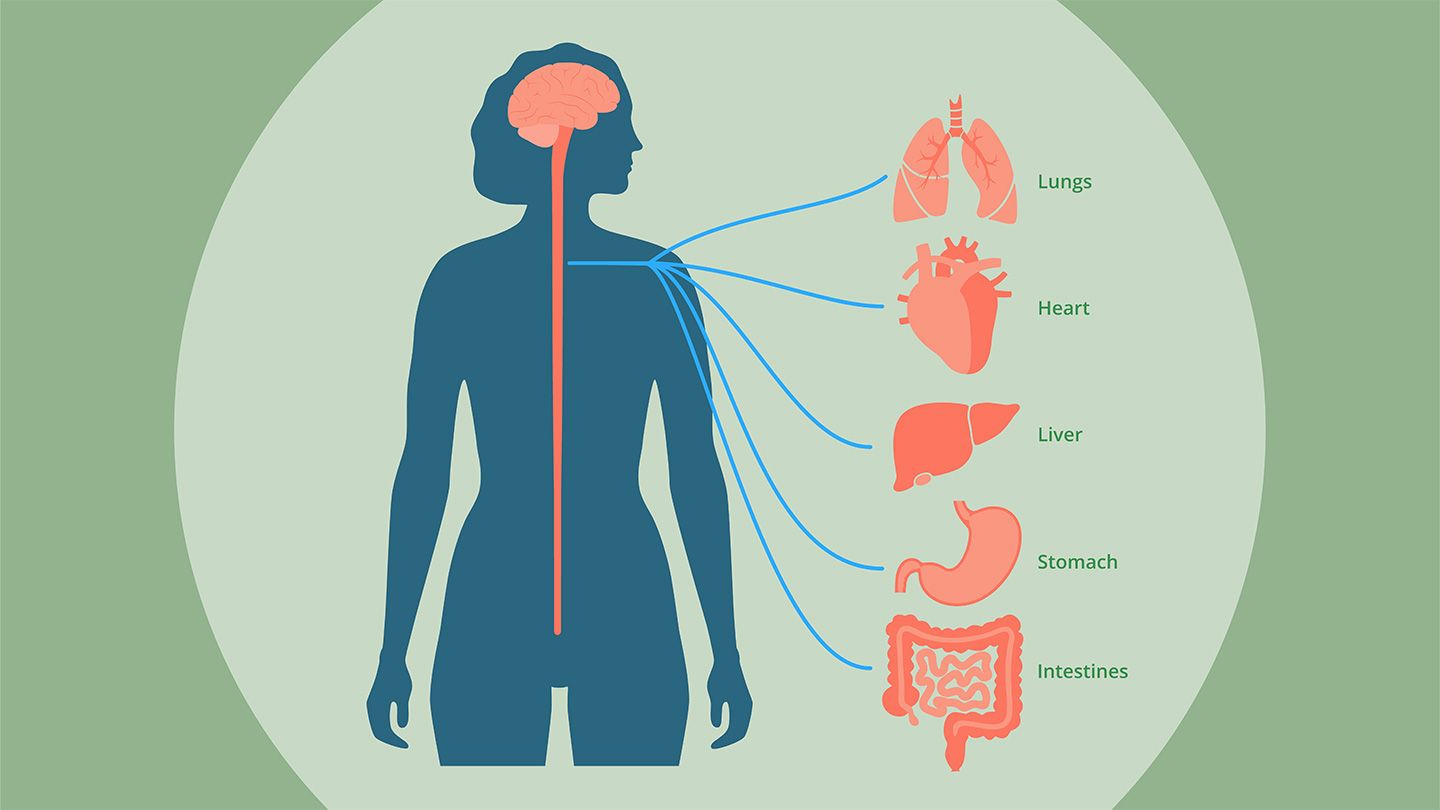A Pathway to Calmness and Connection
Have you ever wondered why slow, deep breaths feel so soothing, especially at the end of a yoga class or during meditation? It turns out there’s a fascinating connection between these breaths and a nerve in our body called the vagus nerve. Let’s explore what the vagus nerve is, why it’s crucial for our well-being, and how we can harness its power to promote calmness and connection in our lives.
The vagus nerve, derived from the Latin word for “wandering,” is a complex nerve that stretches from the brain stem down to the colon, connecting various organs along the way. This nerve acts as a messenger, conveying signals between our brain and organs, influencing functions like heart rate, digestion, and inflammation levels. It’s like a superhighway of information for the parasympathetic nervous system, which promotes a state of relaxation and rest.
Dr. Brendan Kelley, a neurology expert, compares the vagus nerve to a highway for the parasympathetic nervous system, facilitating communication between our brain and organs. When we engage in activities like deep breathing, the vagus nerve interprets this as a cue of safety, signalling to our body that it’s okay to relax and let go of tension.
Dr. Stephen Porges, a renowned neuroscientist, emphasizes the importance of feeling safe for optimal bodily function. He suggests that our ability to handle stress is deeply intertwined with the activity of the vagus nerve. When we feel safe and supported, the vagus nerve activates, promoting feelings of calmness and connection. Conversely, in moments of threat or anxiety, the vagus nerve deactivates to prepare us for fight or flight.
So, how can we activate and nurture our vagus nerve to promote well-being? Here are four simple yet effective techniques:
- Deep Breathing: Take slow, deep breaths and emphasize long exhales. This stimulates the vagus nerve, promoting relaxation and lowering heart rate. Try making your exhales longer than your inhales for maximum effect.
- Practice Kindness: Prosocial behaviours like being friendly, compassionate, and grateful can strengthen vagal tone. Smile often and engage in acts of kindness towards others to boost your vagus nerve activity.
- Gentle Self-Massage: Stimulate the vagus nerve by gently massaging tender spots around your face and neck. Focus on areas like the eyes, ears, jaw, and neck to promote relaxation and connection.
- Laugh Often: Laughter activates the vagus nerve and promotes diaphragmatic breathing. Even simulated laughter, without a humorous cause, can improve health outcomes and enhance vagal tone.
In conclusion, understanding and nurturing the vagus nerve is essential for promoting calmness, resilience, and connection in our lives. By incorporating simple practices like deep breathing, kindness, self-massage, and laughter into our daily routines, we can tap into the power of this remarkable nerve to enhance our well-being and cultivate meaningful connections with others. So, take a moment to breathe deeply, smile, and embrace the journey of nurturing your vagus nerve for a happier and healthier life.

